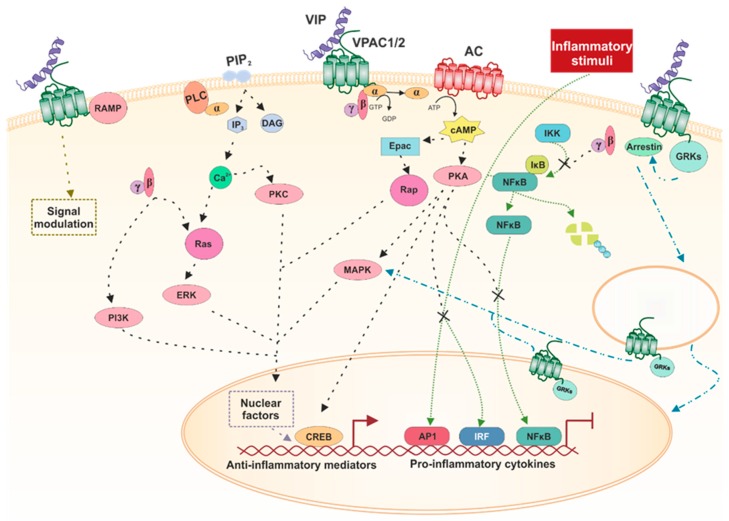Figure 1.
VIP/VPAC receptors’ axis signaling pathways. VIP/VPAC receptors’ binding activates a cAMP-dependent signaling pathway mediated by the induction of AC (black arrows). Then, cAMP activates PKA, which in turn induces nuclear translocation of CREB (black arrows). Besides, PKA inhibits the activation of pro-inflammatory transcription factors such as AP-1, IRF, or NFκB (black cross). Additionally, cAMP in a PKA-independent way simulates EPAC (black arrows). This second messenger induces anti-inflammatory transcription factors. VPAC receptors can also activate PLC and PI3K (black arrows). Both signaling pathways produce the nuclear translocation of anti-inflammatory transcription factors. These receptors can also interact with accessory RAMPs, modulating the canonical signaling pathways (dark green arrow). Furthermore, VPAC1 is able to translocate to the nucleus by the interaction with GRKs (blue arrows). Inflammatory stimuli activate signaling pathways (light green arrows).

